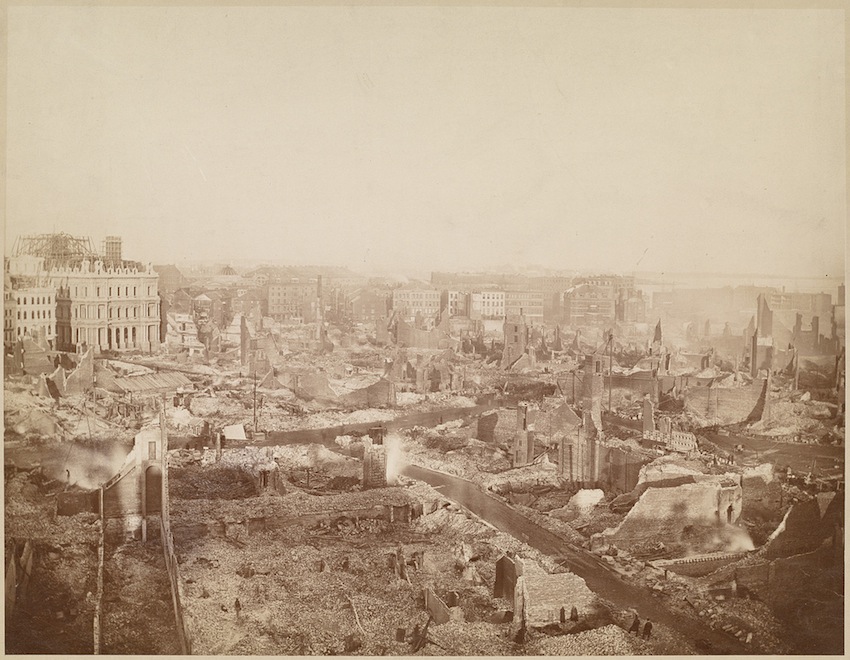Throwback Thursday: When Boston Burned Down
On November 9 and 10th, 1872, a pretty sizable portion of Boston burned down. The Great Boston Fire of 1872 started in the basement of a commercial warehouse on Summer Street, and from there, it spread to inflict $75,000,000 in damages, destroy 776 buildings, and kill at least 13 people. It required firefighters from several surrounding states to extinguish it. In the end, it burned an area between Washington, Summer, Milk Street, and the waterfront—what makes up the Financial District today.

“Bird’s-eye view of Boston, showing the burned district” via Norman B. Leventhal Map Center at the BPL.
Boston before the fire was a literal tinderbox, with little oversight for building codes, highly flammable wooden roofs that allowed the fire to spread, and bad planning for this kind of an event in the Fire Department, despite the Chicago fire just a year earlier.
Perhaps a good caption for the stark images that came after the fire, like the one above, is this stanza of the poem “After the Fire” by Oliver Holmes, which he wrote after watching the conflagration.
The cloud still hovers overhead,
And still the midnight sky is red;
As the lost wanderer strays alone
To seek the place he called his own,
His devious footprints sadly tell
How changed the pathways known so well;
The scene, how new! The tale, how old
Ere yet the ashes have grown cold!
The fire spurred Boston to reform its firefighting protocols. From an urban planner’s point of view, there was some good news. The event left a gaping hole in the heart of the city, which the business community used to construct the Financial District in its place. (Insert your Filene’s hole jokes here.)



